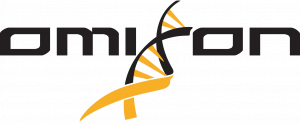Omixon acquires Organ Monitoring Group BV
Omixon to commercialize a cell-free DNA assay for transplant monitoring developed and validated by a transplant physician
BUDAPEST, HUNGARY, June 4, 2022 /EINPresswire.com/ -- Omixon Biocomputing, Kft announced today that it has completed a collaborative agreement with Organ Monitoring Group to develop post-transplant monitoring product HoloGRAFT. As part of the agreement Omixon secured an exclusive option to acquire all remaining shares of Organ Monitoring Group BV (OMG) after having acquired 50% of OMG. Organ Monitoring Group BV owns some exclusive license rights to commercialize patented methods using copy-number-variant markers using digital polymerase chain reaction (dPCR) technology for transplant monitoring. The method was developed and validated by John Whitlam, MD, PhD, Clinical Lead, Kidney Transplantation at Austin Health, and colleagues at the Murdoch Children’s Research Institute in Melbourne, Australia. Omixon will fund collaborative development programs related to transplant monitoring applications while Mr Doug Bost, Founder and CEO of OMG, joins Omixon as Member, Board of Directors, and Vice-President of Transplant Monitoring Products. Financial details of the transaction were not disclosed.“Transplant recipients need to take immunosuppressive drugs for the rest of their lives. Too much of immunosuppression leads to cancer or infections, too little leads to rejection. However, each individual patient has patient-specific responses to the transplant. Frequent monitoring of transplant rejection can help to recognise rejection early when it can be treated without irreversible damage to the organ. Currently frequent monitoring by cell-free DNA is prohibitively expensive. Omixon is developing HoloGRAFT based on its license and makes frequent transplant monitoring affordable. Since transplants are the most expensive medical procedures, transplant monitoring may not only improve transplant outcomes, but it may also save money for the healthcare system.” - stated Attila Berces, CEO of Omixon.
“Cell-free DNA has proved to be a sensitive biomarker for monitoring transplant rejection. Ideally such a test needs to be repeated often and affordability becomes an important factor. HOLOGRAFT from Omixon may provide the best affordable solution to optimize personalized care of each patient, treat early when needed and avoid aggressive immunosuppression when not necessary." says Professor Dominique CHARRON , MD, PhD, professor emeritus at the University of Paris, Honorary Director of the Jean Dausset Laboratory of immunology and histocompatibility.
For further details on HoloGRAFT do not hesitate to contact us at holograft@omixon.com or call +36-70-672-7551.
About Omixon
Omixon is a transplantation diagnostics company with customers in 25 countries, headquartered in Budapest, Hungary, with subsidiaries in Cambridge, MA and Utrecht, Netherlands. With core competences in bioinformatics, software engineering, molecular diagnostics, quality, and regulatory science Omixon designs in vitro diagnostic products under ISO13485 to improve transplant outcomes. Omixon was the first company to enable unambiguous histocompatibility genetic testing -called HLA genotyping – on a next generation sequencing platform. Omixon recently introduced NanoTYPE, the first high resolution transplant compatibility test under five hours turnaround time on the Oxford Nanopore sequencing platform.
About The Organ Monitoring Group, BV.
The Organ Monitoring Group BV was founded by Mr. Doug Bost, for the acquisition of intellectual and industrial property, including commercial patents, trademark rights, clinical data, licenses, and other know-how related to organ transplant monitoring.
Attila Berces
Omixon Biocomputing Kft.
+36 70 574 8001
email us here
Omixon's Impact in Transplantation
Legal Disclaimer:
EIN Presswire provides this news content "as is" without warranty of any kind. We do not accept any responsibility or liability for the accuracy, content, images, videos, licenses, completeness, legality, or reliability of the information contained in this article. If you have any complaints or copyright issues related to this article, kindly contact the author above.


